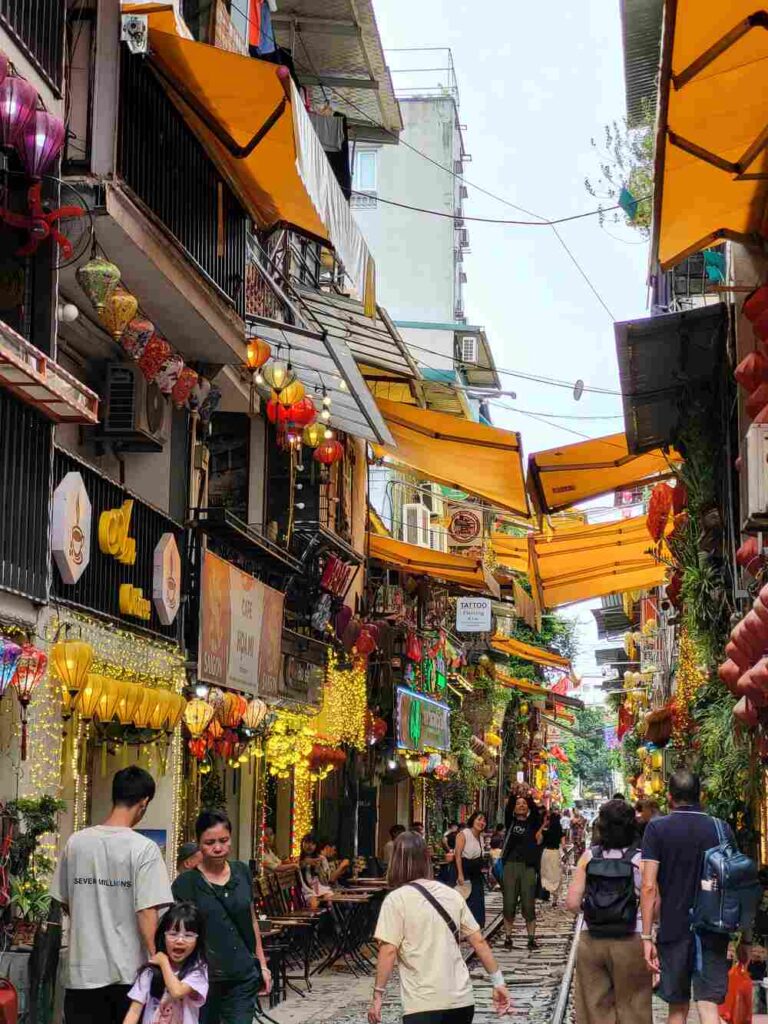Learning some basic Vietnamese phrases can dramatically increase your experience of Vietnam.
Traveling to Vietnam is an adventure filled with rich culture, stunning landscapes, and delicious cuisine. Having experienced this incredible country myself, I can tell you firsthand that the experience becomes even more meaningful when you can connect with locals through their language. It’s a gateway to deeper conversations, authentic moments, and a richer understanding of Vietnam’s beauty.

Many people in the major cities speak basic English for tourism, but no matter where your Vietnam itinerary takes you, it’s always good to have a few words under your belt for easier communication.
The History of Vietnamese
The Vietnamese language has a rich history rooted in the Austroasiatic language family. Vietnamese was shaped by various cultural and historical influences, notably the Chinese during their thousand-year rule starting in 111 BCE.
In the 19th century, French colonial rule brought further changes with the introduction of the Latin-based Quốc Ngữ script.
Post-independence, Vietnamese continued to evolve and is now the official language of Vietnam, spoken by the majority of the population. The language’s global presence has also grown through the Vietnamese diaspora in countries like the United States, Australia, and France. Despite these external influences, Vietnamese has maintained its distinct linguistic identity.
Do you have to speak Vietnamese when you are in Vietnam?
Many people ask if you need to know Vietnamese to travel to Vietnam. The short answer to that is: no.
You don’t need to use any Vietnamese in tourist spots like Hanoi, Ho Chi Min, Da Nang (etc), so you can get around quite easily without using any Vietnamese. But nothing beats the smiles you get when you speak a bit of the local language.
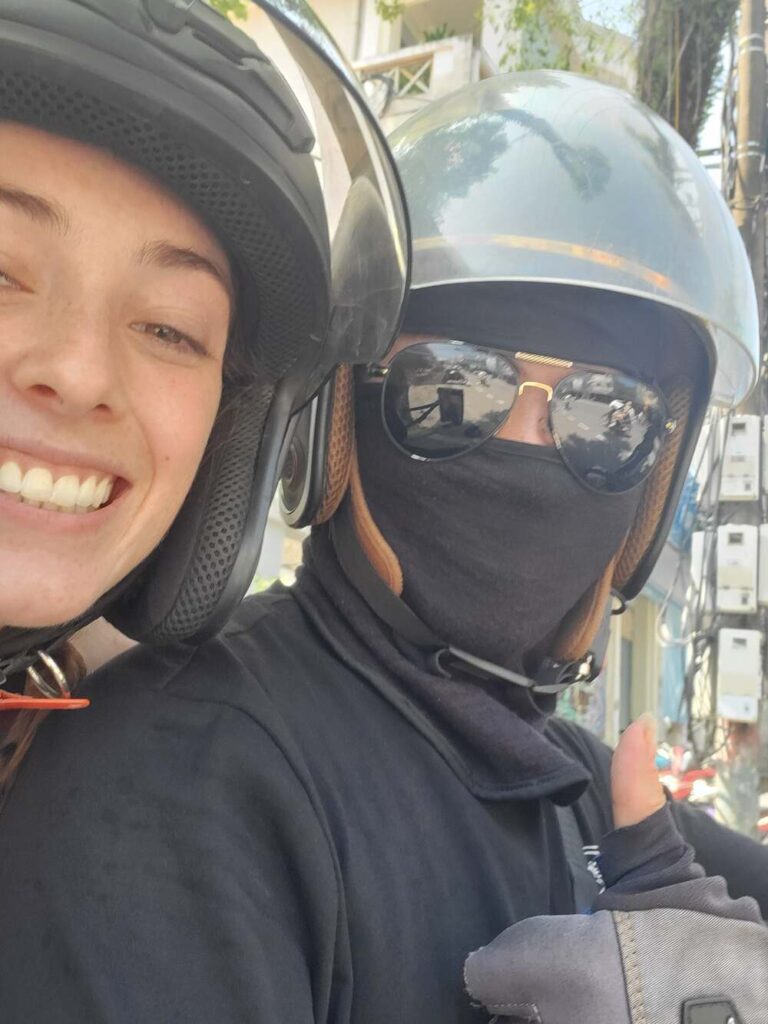
However, learning a common Vietnamese words and basic phrases can make your adventure so much smoother and way more enjoyable! Plus, it shows respect for the culture and makes your travel experience way more authentic.
PDF of Vietnamese Cheatsheet
I have included a PDF of a table that includes all of the following phrases below. Feel free to save it or print it out to bring it on your journey!
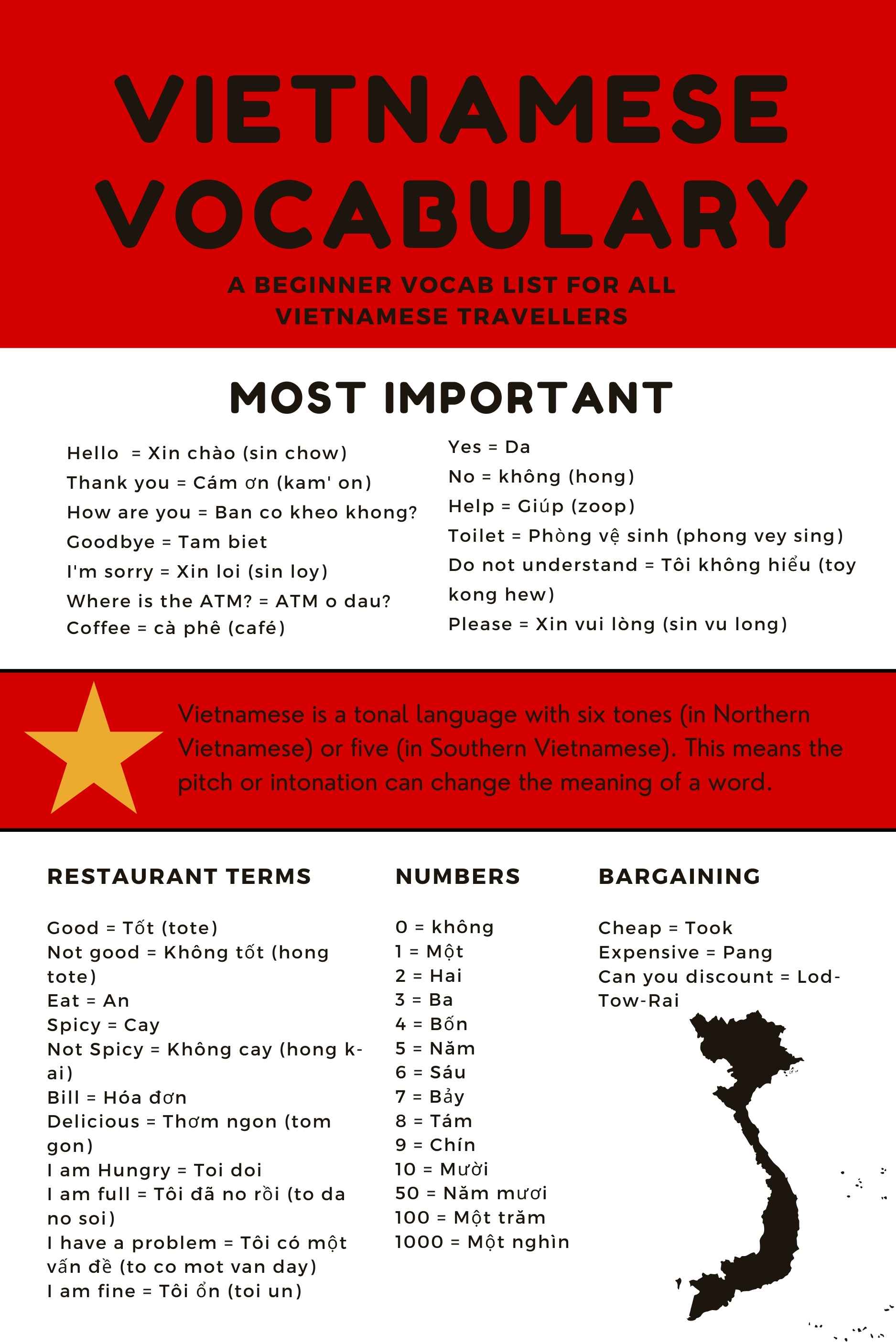
Useful Vietnamese Phrases to Know
It’s always a nice touch to learn some essential Vietnamese phrases when going to Vietnam. Every traveler should know some common language skills for the country they are traveling to.
From ordering street food, asking for directions, or just saying “hello,” these basic Vietnamese phrases will help you connect with locals in daily conversation and make your trip unforgettable.
The Basics
This is a small list of the most useful phrases to know in Vietnamese!
Hello = Xin chào (sin chow)
Thank you = Cảm ơn (gam on)
How are you = Ban co kheo khong?
Goodbye = Tạm biệt
I’m sorry/Excuse me = Xin loi (sin loi)
Where is the ATM? = ATM o dau?
Please = Xin vui lòng (sin vu laow)
Yes = Da
No = Không (hong)
Help = Giúp (zoop)
Toilet = Phòng vệ sinh (phong vey sing)
Do not understand = Tôi không hiểu (toy kong hew)
Coffee = Cà phê (café)
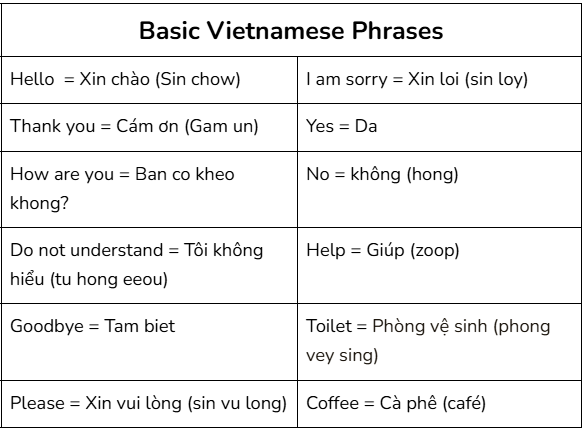
Restaurant
Vietnam is known for its amazing food! Each region has its own specialties, and I found myself constantly amazed by the variety, creativity, and sheer tastiness of every dish. Even the street vendors blew me away with the bánh mì and pho.
Here are some basic Vietnamese words to use when ordering or complimenting food on your trip.
Good = Tốt (tote)
Not good = Không tốt (hong tote)
Eat = An
Spicy = Cay
Not Spicy = Không cay (hong k-ai)
Bill = Hóa đơn
Delicious = Thơm ngon (tom gon)
I am hungry = Toi doi
I am full = Tôi đã no rồi (to da no soi)
I have a problem = Tôi có một vấn đề (to co mot van day)
I am fine = Tôi ổn (toi un)
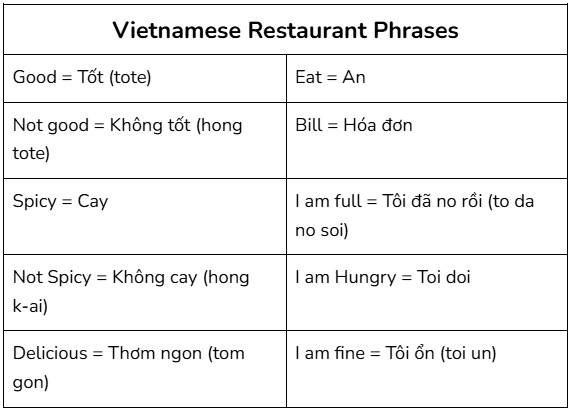
Flirting
A harmless compliment and some flirting never hurt anyone, it can even lead to new friends, right? Compliment some locals and see what it can do for you, or impress some travelers with your skills.
Good luck = Chúc may mắn
See you again = Hẹn gặp lại (hen hap lay)
Handsome = Dẹp trai (dep chai)
Beautiful = Xinh đẹp (sing day)
I love you = Anh Yêu Em (an you em)
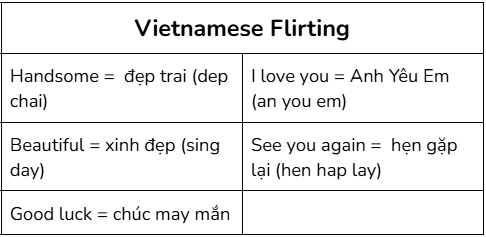
Bargaining
Shopping and bargaining are expected in Southeast Asia, especially in Vietnam. If it’s your first time traveling to a bargain-heavy culture, knowing some common Vietnamese phrases can take you a long way. English speakers often get quoted higher prices, but understanding some basics may get you a better deal and can save you from a bad bargain.
Knowing how to bargain in local markets and shops is a trained skill, and the people here will definitely put you to the test.
Cheap = Rẻ (zay)
Lower = Thấp hơn (top hun)
Too much money = Quá nhiều tiền (qua no tien)
I want – Tôi muốn (toy mwuhn)
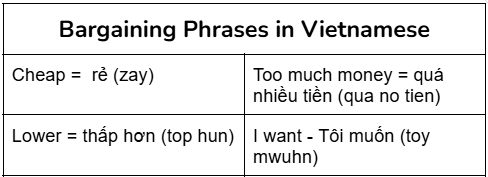
Numbers
0 = Không
1 = Một
2 = Hai
3 = Ba
4 = Bốn
5 = Năm
6 = Sáu
7 = Bảy
8 = Tám
9 = Chín
10 = Mười (moi)
50 = Năm mươi (nam moi)
100 = Một trăm (mot tam)
1000 = Một nghìn (mot neen)
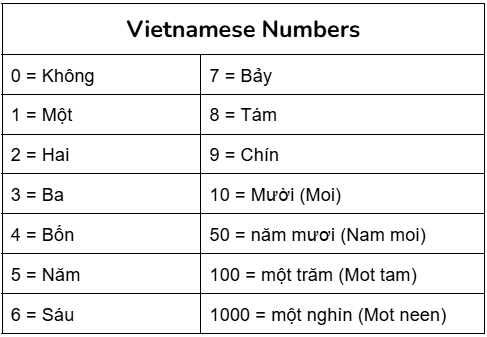
Key Differences Between Vietnamese and English
The first thing to note about Vietnamese is how different it is from English – from pronunciation to grammar.
Vietnamese uses the same alphabet as English, however, there are a few fundamental differences that are important for learning, understanding, and speaking Vietnamese.
Vietnamese is a Tonal Language
Vietnamese is a tonal language with six tones (in Northern Vietnamese) or five (in Southern Vietnamese). This means the pitch or intonation can change the meaning of a word. For example, “ma” can mean “ghost,” “mother,” or “rice seedling,” depending on the tone.
The Key to Vietnamese Pronunciation
The Vietnamese language has many sounds not found in English, such as “ng” at the beginning of a word (like “người” for “person”). It also uses a lot of diacritical marks, which are critical for pronunciation and meaning.
Vietnamese Grammar
Vietnamese does not have verb conjugations or plural forms. Instead, context and word order play a significant role. Additionally, there’s no distinction between masculine and feminine forms.
Word Order in Vietnamese
Vietnamese follows a Subject-Verb-Object word order, similar to English.
Tips for Learning or Understanding Vietnamese
Tips for learning Vietnamese are much the same as learning any other language, but here are a few I can pass on:
Start with Common Phrases
Begin with simple Vietnamese phrases that you’ll use often. This helps you get accustomed to the rhythm and tone of the language. The cheat sheet included in this post is a very good place to start with common phrases!
Use Visual Aid
Flashcards with both the word and its tone mark can help reinforce correct pronunciation and photos of the translation. I also enjoy having phrases written out in English and describing how they should be pronounced.
Immerse Yourself
Listening to Vietnamese music, watching movies, or trying to speak with native Vietnamese speakers in one of the most effective methods of learning. Immersion is one of the best ways to pick up the nuances.
Learn Basic Grammar
While grammar isn’t as complex as some languages, understanding sentence structure and word order will help you form your own sentences.
Practice Regularly
Consistency is crucial. Practice a little every day, whether through apps, language partners, or just speaking to yourself.
Be Patient and Persistent
Learning a new language takes time, especially one as different from English as Vietnamese. Stay motivated by setting small, achievable goals.
Conclusion
Even knowing just a few of these most basic Vietnamese phrases can make a huge difference when conversing with Vietnamese locals or just navigating the country. I have included PDFs of each section and one master sheet if you like having it all in one place, for you to keep and use on your journeys! I hope this is useful on your next adventure and these key phrases help with an unforgettable experience to come. Enjoy your travels.
Similar Posts
If you are still in the planning phases of your trip, I have a Vietnam city-by-city guide of all the popular Vietnamese destinations, with what to do and where to eat in each place!
I also wrote a post about my Vietnam travel budget and what to expect to spend on your trip, depending on your travel style.




